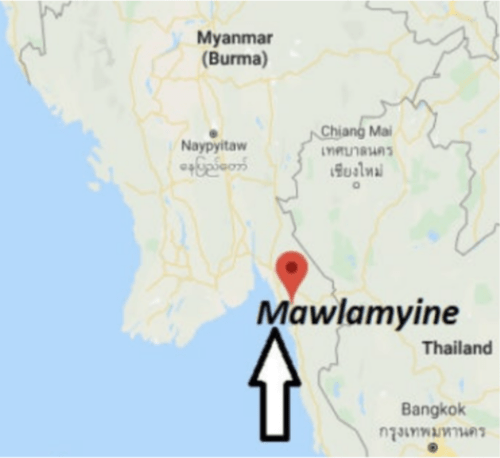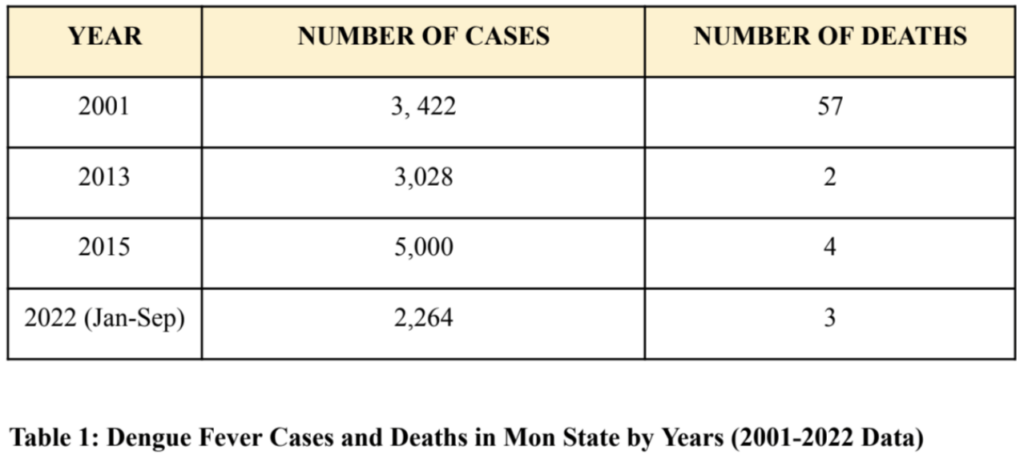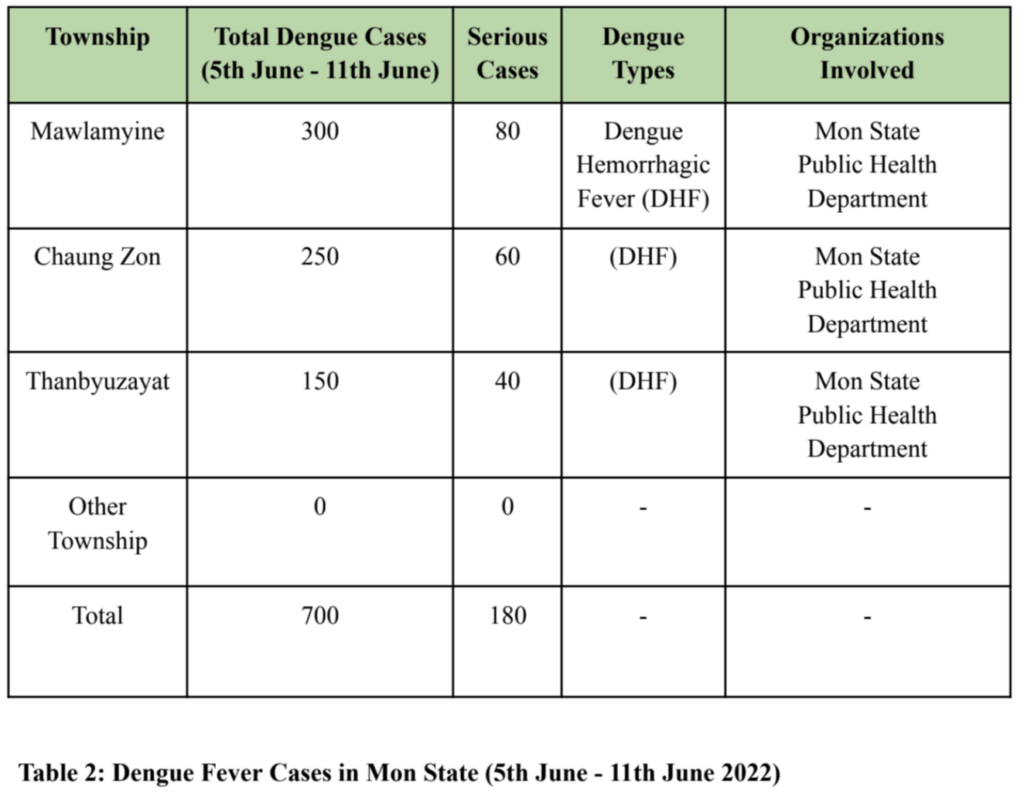"How can Mawlamyine become a future-proof city from a One Health Perspective?"
INTRODUCTION
In the context of building a future-proof hometown characterized by its ability to anticipate, adapt, and withstand potential challenges and changes, particularly regarding health and disease, proactive measures are incorporated. These measures aim to assess and address risks, foster resilience and preparedness, and promote a holistic approach that considers the health of humans, animals, and the environment. This essay aims to explore the measures and strategies that can be implemented to create my hometown, Mawlamyine, more resilient and prepared for potential Dengue Fever outbreaks, to reduce their occurrence. By understanding the unique factors of my place, we can identify the specific infectious disease risks it faces and develop targeted interventions to mitigate and manage these risks effectively.
Mawlamyine is the capital town of Mon State, Myanmar.
Geographically, it’s far located on the banks of the Thanlwin River and serves as an essential business and transportation hub in the area. In terms of demographics,
it is a diverse city with a populace along with various ethnic groups, which includes the Mon people who are indigenous to the place. The town has a wealthy cultural
background and is known for its ancient landmarks, together with colonial-era buildings and
Buddhist temples. Socio-economically, Mawlamyine plays an extensive role in the financial
system of Mon State. The town’s economic system is frequently driven by trade, agriculture, and
small-scale industries. It serves as a middle for alternate and commerce, with markets and ports facilitating the motion of products and services.

Additionally, agriculture, together with rice cultivation and fishing, contributes to the neighborhood economic system. For the healthcare infrastructure, Mawlamyine has several hospitals, clinics, and healthcare centers to cater to the healthcare desires of its citizens and surrounding regions. The city is domestic to both public and private healthcare facilities, presenting a variety of clinical offerings. The healthcare infrastructure in Mawlamyine, like in many components of Myanmar, faces demanding situations regarding accessibility and useful resource availability, particularly in rural areas.
Efforts are being made to enhance healthcare offerings and extend get right of entry to great healthcare within the place. (Paik & Win, 2016)
Table 1 provides valuable insights into the incidence of Dengue fever in Mon State, Myanmar, that’s the focus point of this essay. Over the years, Mon State has experienced fluctuations in the number of Dengue fever cases, with the highest incidence recorded in 2015. The facts for the
year 2022 highlight a decrease in the number of instances compared to preceding years, signaling a few developments in disorder manipulation efforts. (Mon State Reports 2,264 Dengue Fever Cases in This Year, n.d)

According to other data from the Mon State Public Health Department which is shown in Table 2, there were over 700 reported cases of Dengue Hemorrhagic Fever (DHF) within that period. Among these cases, 200 individuals suffered from severe illness. The most affected townships were Chaung Zon, Thanbyuzayat, and Mawlamyine. However, it is noteworthy that Mawlamyine Township remains a hotspot for Dengue fever, reporting the highest number of cases. The table highlights the need for ongoing prevention and control measures, as well as the importance of timely and adequate medical treatment for affected individuals. This information also underscores the significance of addressing infectious disease risks and developing
sustainable strategies to ensure the future well-being of my hometown’s population. (Dengue Outbreak in Mon State: Over 700 Cases From 5th to 11th June 2022)

ONE HEALTH APPROACH TO DENGUE HEMORRHAGIC FEVER CONTROL
IN MAWLAMYINE
ANIMAL
Participatory Surveillance (PS): Application of participatory rural appraisal methods to collect epidemiological information for disease control, including understanding host-pathogen-environment interactions. To implement this method in Mawlamyine, we can establish a community-based surveillance system where local residents actively participate in collecting and reporting epidemiological information related to dengue fever. This can involve
training community members on disease identification, data collection techniques, and the importance of early detection. (Mariner et al., 2014; Saputra & Oktaviannoor, 2018) EcoHealth Approach: For the EcoHealth approach, we can initiate collaborative partnerships with relevant stakeholders, including local communities, healthcare authorities, environmental agencies, and research institutions. Together, we can also identify the key factors contributing to dengue fever outbreaks in Mawlamyine and work towards addressing them. This may involve researching to understand the local ecology, mosquito breeding sites, and the interactions between human activities and the environment. (Burns & Stephen, 2015; Saputra & Oktaviannoor, 2018)
HUMAN
Behavior Change: Recognizing the need to change people’s behavior to effectively address infectious diseases. To develop behavior change strategies in Mawlamyine, the main focus will be on community engagement and education programs that aim to raise awareness about dengue
prevention and control. Collaborating with local schools, community centers, and religious institutions can help reach a wider audience and foster a culture of proactive disease prevention. (Rajapaksha et al., 2023; Saputra & Oktaviannoor, 2018)
Social Science Research: Importance of social science research in understanding the dynamics of emerging infectious disease threats and responses, as well as promoting genuine public engagement processes and capturing people’s preferences. Conducting surveys, interviews, and focus group discussions can help identify specific challenges, beliefs, and behaviors that contribute to dengue outbreaks. This information can then be used to tailor interventions and communication strategies that resonate with the community. (Bera, 2004; Saputra & Oktaviannoor, 2018)
ENVIRONMENT
Multisectoral, Socioeconomic, Systems-Based, Collaborative (MSC) Study Approaches: To apply these approaches in Mawlamyine, we can establish partnerships and collaborations among relevant sectors, such as public health departments, environmental agencies, animal health
organizations, and local communities. This interdisciplinary collaboration can facilitate the exchange of knowledge, understanding, and assets necessary for addressing the complicated interactions between humans, animals, and the surroundings. Gathering data on the local ecology, weather patterns, land use practices, and socioeconomic situations will be involved. (Salunke & Lal, 2017; Saputra & Oktaviannoor, 2018) Adaptive Management: Adopting adaptive management principles can enhance the effectiveness of interventions in Mawlamyine. This concerns continuous monitoring and evaluation of ongoing efforts, coupled with the flexibility to adjust strategies based on emerging findings. By regularly assessing the impact of implemented measures, stakeholders can identify areas for improvement, make informed decisions, and adapt interventions to address the evolving dynamics of dengue fever in the region. (Allen, n.d; Saputra & Oktaviannoor, 2018)
CONCLUSION
Despite the ongoing efforts in Mawlamyine to prevent and control Dengue fever, it is evident that the existing approaches are not yielding the desired outcomes. Dengue outbreaks, often perceived as seasonal diseases for the public, are showing effective disease management is in need. In addition, it is imperative to upgrade the systems and interventions, similar to successful models implemented in other countries. A comprehensive and integrated approach is essential to make Mawlamyine future-proof from a One Health perspective and effectively address the challenges posed by Dengue fever outbreaks. By implementing a combination of animal-focused, human-focused, and environment-focused strategies, Mawlamyine can build resilience, improve disease prevention and control, and ensure the well-being of its population. By embracing the One Health approach, my hometown can pave the way for a sustainable and healthier future.
REFERENCES
Allen, W. “Adaptive Management for Health and Environment.” Learning for Sustainability, 2007. https://www.learningforsustainability.net/governance/adaptive_management.php.
Bera, A. “The Value of Social Science Research during the Implementation of Dengue Fever
Prevention and Control Activities in Fiji.” World Health Organization, 1 Dec. 2004.
https://apps.who.int/iris/handle/10665/163996.
Burns, T.E., and Stephen, C. “Finding a Place for Systems-Based, Collaborative Research in
Emerging Disease Research in Asia.” Ecohealth, 2015,
https://doi.org/10.1007/s10393-015-1072-x
“Dengue Outbreak in Mon State: Over 700 Cases from 5th to 11th June.” Myanmar International
TV, 18 June 2022. https://www.myanmaritv.com/news/dengue-outbreak-mon-state-over-700-cases-5th-11th-june.
Mariner, J.C., et al. “Experiences in Participatory Surveillance and Community-based Reporting
Systems for H5N1 Highly Pathogenic Avian Influenza: A Case Study Approach.” PubMed, vol.
11, no. 1, 2014, pp. 22-35, https://doi.org/10.1007/s10393-014-0916-0
“Mon State Reports 2,264 Dengue Fever Cases in This Year.” Eleven Media Group Co., Ltd.
https://elevenmyanmar.com/news/mon-state-reports-2264-dengue-fever-cases-in-this-year.
Rajapaksha, N.U., et al. “Health-seeking Behaviors, Dengue Prevention Behaviors and
Community Capacity for Sustainable Dengue Prevention in a Highly Dengue-endemic Area, Sri
Lanka.” BMC Public Health, vol. 23, no. 1, 2023, https://doi.org/10.1186/s12889-023-15404-5
Paik, Y.M., and Win, W. “Mawlamyine as A Commercial City in Greater Mekong Subregion.”
GMSARN International Journal, vol. 10, no. 4, 2016.
http://gmsarnjournal.com/home/wp-content/uploads/2017/01/vol10no4-8.pdf.
Salunke, S., and Lal, D.K. “Multisectoral Approach for Promoting Public Health.” Indian Journal
of Public Health, vol. 61, no. 3, 2017, pp. 163, https://pubmed.ncbi.nlm.nih.gov/28928298/
Saputra, M., and Oktaviannoor, H. “One Health Approach to Dengue Haemorrhagic Fever
Control in Indonesia: A Systematic Review.” KnE Life Sciences, vol. 4, no. 1, 2018, pp. 201,
https://doi.org/10.18502/kls.v4i1.1382